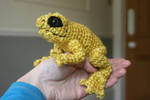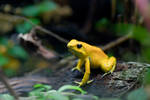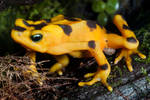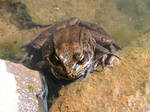ShopDreamUp AI ArtDreamUp
DeviantArtist Questionnaire
How long have you been on DeviantArt?
Wow, I have been on here for 12 years.
What does your username mean?
It means "plum blossom" in Chinese. I randomly chose it because the username I wanted was taken (and that person has been inactive for a loooong time too :(). It is the name of a song by Teresa Teng, who I loved when I was little.
Describe yourself in three words.
Procrastinator, caring, artistic
Are you left or right handed?
Right-handed.
What was your first deviation?
Neopets art - I uploaded it in 2003 and then forgot about DeviantArt for a couple of years. Lol. For some reason the thumbnail doesn't even work - is it too old??? C
It's been a while...
Hi everyone!
It has been ages since I have been on deviantART - nearly two years have passed since I was last active! First of all, I apologize sincerely, and I will try to catch up with messages. I have 12115 notifications right now! Read on if you want to hear my excuses...
I moved back from Taiwan in summer of 2013, and I got a job as a TA at a school! While the job itself was great, the commute was not. It was an hour, one way, with no traffic, which meant that with normal Bay Area traffic, I was spending upwards of 4 hours a day in a car. Extremely exhausting - couldn't keep my eyes open once I got home.
Secondly, I don't know how man
Feature - Contest Winners
Hello all! Sorry for the relative lack of activity here lately - we have all been extremely busy! Here's my way of making it up to you - a big ol' journal feature with some extremely talented artists and photographers! Three of our bird-related affiliates recently wrapped up some contests, so without further ado, here are the amazing winners!
:clap:
Bird-Photography (https://www.deviantart.com/bird-photography)'s Birds in Weather Contest Winners
:trophy: First Place Winner showcasing WIND
Strix Nebulosa II by blizzard2006 (https://www.deviantart.com/blizzard2006)
:trophy: Second Place showcasing SNOW and WIND
Against the Wind by JRd1st (https://www.deviantart.com/jrd1st)
:trophy: Third Place showcasing SNOW
Tufted Titmouse in Snow by :devbarc
IVAD - Joint Poster Contest - EA and BC
International Vulture Awareness Day
Joint Poster Contest
EndangeredArt (https://www.deviantart.com/endangeredart) and Birds-Club (https://www.deviantart.com/birds-club)
:star:Vulture Competition Winners!:star:
The poll closed on Saturday and here are the winners you chose!
:trophy: 1st Place:
:thumb330938676:
Critically Endangered: Slender-Billed Vulture by Khezix (https://www.deviantart.com/khezix)
:trophy: 2nd Place:
:thumb330896730:
Hazy Future by Kasaurus (https://www.deviantart.com/kasaurus)
:trophy: 3rd Place:
:thumb325303158:
Egyptian Vulture by LexerJ (https://www.deviantart.com/lexerj)
Honourable mention to:
:thumb328238976:
Day of the Vulture by Saromei (https://www.deviantart.com/saromei)
Congratulations guys, your prizes are on their way! :D
Vultures are an oft-misunderstood bird due to their propensity to c
Featured in Groups
© 2012 - 2024 meihua
Comments25
Join the community to add your comment. Already a deviant? Log In
Thank you for the informing article  We frequently get little spotted grass frogs visit our place because we have a pool and leaf litter surrounding it. They are the cutest little things and sometimes hop right into our hands
We frequently get little spotted grass frogs visit our place because we have a pool and leaf litter surrounding it. They are the cutest little things and sometimes hop right into our hands 




















